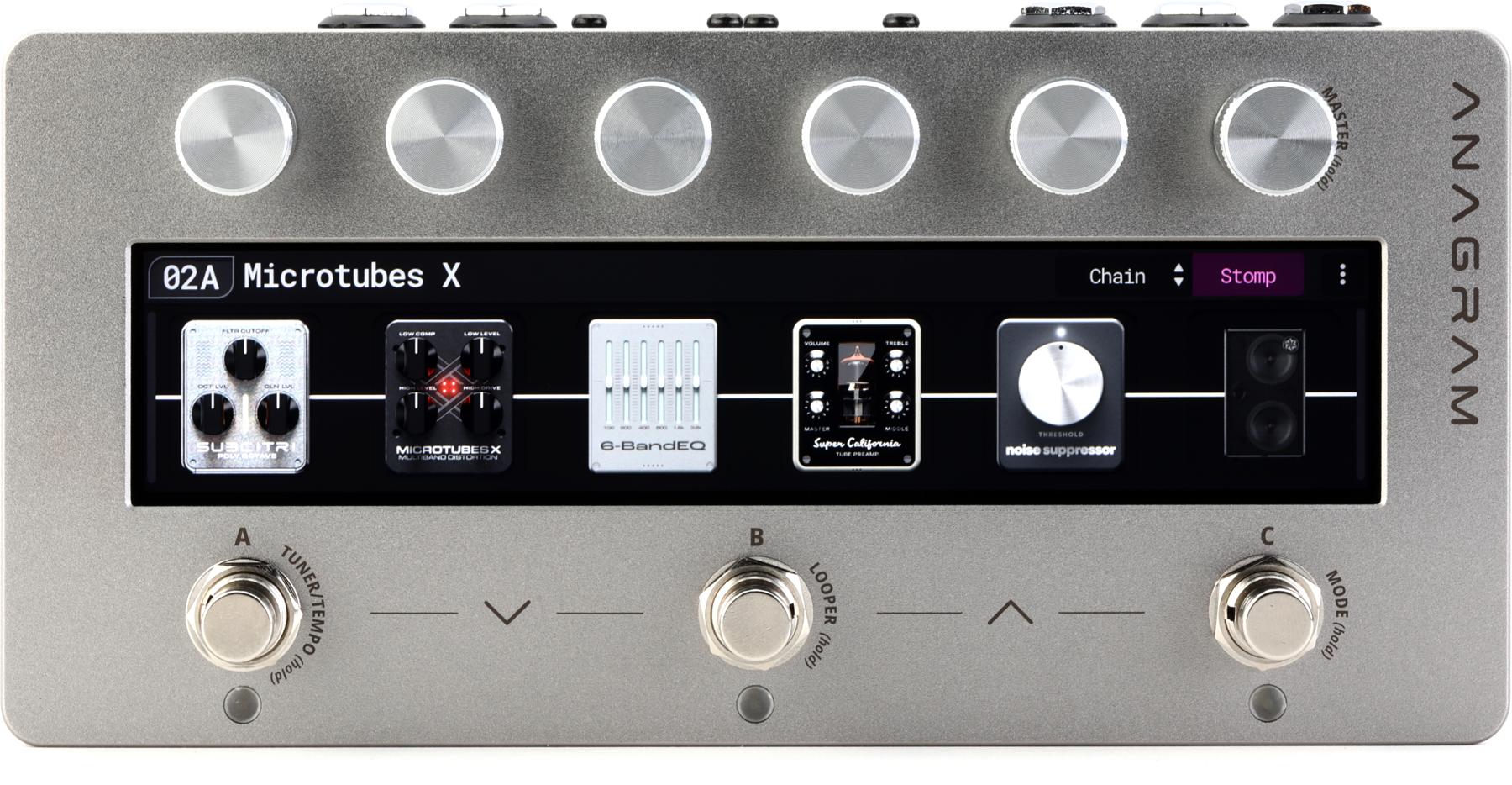Death By Audio’s most esoteric pedals are regarded by some as the company’s best and most visionary. But some of DBA’s greatest creations, like the Fuzz War, are also its simplest. The new Space Bender chorus lives somewhere in the middle of that complexity spectrum. Its sounds and some facets of its functionality are often unconventional, at times elusive, and occasionally unexpected.
But there are also sounds here that are redolent with moody, familiar vintage chorus and flange colors without sounding precisely like any specific vintage touchstones. This capacity for function, familiarity, and exotic textures make Space Bender a musical mood machine that can make simple ideas sound celestial or certifiably demented.
Rockers Are Go!
Space Bender is another beautifully executed riff on DBA’s retro-future design vernacular. As with most DBA pedals, its graphics and controls are stylish, smart, and make the Space Bender more fun to use. The three rocker switches (which evoke old Mu-Tron pedals—always a cool move) flip between low and high modulation intensity, LFO or envelope mode, or short and long delay times in the modulation line. They also streamline the user’s sound-design experience. A lot of builders might have opted for variable intensity and delay-time knobs for these functions. But DBA’s reduction of those variables to binary choices means you focus a lot more on the sensitivity and range of the depth and speed knobs.
Bent at the Event Horizon
As is the case with many DBA pedals, it’s good to explore Space Bender’s sounds intuitively and expect the unexpected. Though Space Bender generates rich washes of chorus, its basic modulation voice has a perceptibly metallic edge. Lots of conventional choruses and flangers exhibit some of these metalloid overtones as chorused waveforms interact. But in the Space Bender they lend a liveliness to overtones and harmonics as a signal fades.
Working with the pedal is a gas. Though flicking the switches and twisting knobs with reckless abandon is a great way to approach things, paying close attention to how the controls interact yields big dividends and is the key to tapping into the Space Bender’s expansive vocabulary at will.
There are a lot of intoxicating variations on classic chorus themes in the Space Bender. My go-to (hi-intensity, +10 delay time, LFO on, depth around 9 o’clock) produced everything from 12-string-like sounds to thick BBD-style chorus to wobbly quasi-rotary sounds, depending on where I set the speed. Subtle sounds abound, too. Using the LFO setting at low intensity and at shorter delay rate, for instance, produces modulations that sound more like filter effects. They’re subtle shades that shine when driven with overdrive or boost.
Switching to +10 can turn thinner, clanging chorus clusters into an orchestra of heavenly glockenspiels.
It takes just one flip of a rocker switch, however, for mellow modulations to become massive. The delay switch is particularly transformative. Though the snappy echoes you hear in the +10 mode make the pedal sound and act like there’s a separate echo circuit onboard, the “delay” refers instead to the delays among the waveforms that create the phase shift and chorus effect. In +1 mode, modulations sound tightly clustered—even at slow modulation rates. But switching to +10 can turn these thinner, clanging chorus clusters into an orchestra of heavenly glockenspiels.
This is also the ticket to the most vintage BBD-like sounds—particularly at modest depth settings. And the expansive echoic aspect of these voices helps the Space Bender transcend traditional chorus tones.
The envelope function is the trickiest of the three switches to master. It uses your input signal to modify the delay times rather than the intensity or rate of modulation. Merely switching to the envelope settings can make modulations a little hazier and sometimes flangier, and I often left it on for those reasons rather than any dynamic interplay it enabled. Without any gain source in front of the Spacer Bender, envelope-prompted changes in delay time tend to be subtle. Adding gain makes the envelope feel much more dynamic.
The Verdict
The Space Bender, in classic DBA fashion, twists the chorus effect to much more original and often mangled-sounding ends. There are loads of thick, rich modulation sounds that evoke vintage chorus and flange without imitating them, and a cornucopia of textures, from ring-modulated sounds to deep, throbbing tones that sound designers and experimental musicians will devour—particularly when paired with gain, reverb, and delay devices. The Space Bender may not be the easiest modulation pedal to master, but the path of discovering the sounds you want often leads to sounds you didn’t even know you needed. And that’s a lovely thing to experience in a musical instrument.



















